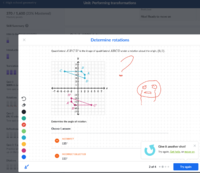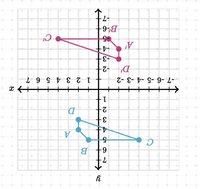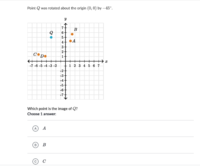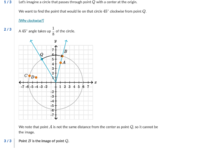AAA
Junior Member
- Joined
- Nov 29, 2020
- Messages
- 63
Hi,
Can anyone help me with my high school geometry course. I am taking it online and I want to know how to rotate shapes. I attached an example question. An urgent response please. I am getting behind on this and I have to move on.
Can anyone help me with my high school geometry course. I am taking it online and I want to know how to rotate shapes. I attached an example question. An urgent response please. I am getting behind on this and I have to move on.





